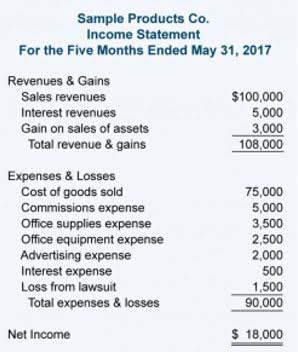
Adjustment entries are an essential aspect of accounting that ensures financial statements are accurate and follow accounting principles. These entries are made at the end of an accounting period to adjust accounts and reflect any changes that have occurred during the period. Accruals are expenses that have been incurred but not yet paid. To record an accrual, an accountant would debit an expense account and credit a liability account. Prepaid insurance can be paid monthly, quarterly, or yearly adjusting journal entry for prepaid insurance depending on the insurance plan and policies as well as the company’s preference. The prepayment will hence, provide insurance coverage for the company within the period covered by the prepayment.
Which of these is most important for your financial advisor to have?

Prepaid insurance is the portion of an insurance premium that has been paid in advance and has not expired as of the date of a company’s balance sheet. This unexpired cost is reported in the current asset account Prepaid Insurance. Because they represent a future benefit owed to the company, companies list prepaid expenses first on the balance sheet in the prepaid asset account. Because companies anticipate them to be consumed, employed, or spent through regular business activities within a year.
Part 2: Your Current Nest Egg

The adjusting entry TRANSFERS $1,000 from Prepaid Rent to Rent Expense. fixed assets Adjustment entries are accounting entries made at the end of an accounting period to record transactions that have occurred but have not yet been recorded. These entries are necessary to ensure that financial statements accurately reflect the company’s financial position and performance.
Understanding Goodwill in Balance Sheet – Explained
- The income statement account that is pertinent to this adjusting entry and which will be debited for $1,500 is Depreciation Expense – Equipment.
- Rent is the right to occupy the premises owned by another party.
- Each type of adjustment entry serves a specific purpose and is designed to ensure that financial statements are accurate and complete.
- Note that before the adjusting entry for prepaid insurance is made, the dollar equivalent of the portion of insurance that has expired has to be determined.
- The point is that a business has to select payment options that are reasonable and appropriate for their situations and circumstances and require payments in reasonable increments.
The company can record the prepaid insurance with the journal entry of debiting the prepaid insurance account and crediting the cash account. The adjusting entry for prepaid expense will depend upon the initial journal entry, whether it was recorded using the asset method or expense method. The accounting process for booking prepaid expenses is to initially record the payment as an asset and then gradually reduce that balance over time as the goods or services are used. The company usually purchases insurance to protect itself from unforeseen incidents such as fire or theft. And the company is usually required to pay an insurance fees for one year or more in advance. In this case, it needs to account for prepaid insurance by properly making journal entries in order to avoid errors that could lead to misstatement on both balance sheet and income statement.

Adjusting entries

Now that the company has prepaid for services to be used, it is classified as an asset. An asset account which is expected to have a credit balance (which is contrary to the normal debit balance of an asset account). For example, the contra asset account Allowance for Doubtful Accounts is related to Accounts Receivable. The contra asset account Accumulated Depreciation is related to a constructed asset(s), and the contra asset account Accumulated Depletion is related to natural resources.
What are the 4 types of adjustments in accounting?

Well, we only made the one entry for prepaid rent on the adjusting date, where we created the prepaid rent for the 8 months remaining. So we have a prepaid rent balance of $8,000 and our rent expense, well, it was $12,000, right? We started with $12,000 and then we subtracted $8,000 and it left us with $4,000, right?
- The accounting method under which revenues are recognized on the income statement when they are earned (rather than when the cash is received).
- The prepayment will hence, provide insurance coverage for the company within the period covered by the prepayment.
- Therefore, the unexpired portion of this insurance will be shown as an asset on the company’s balance sheet.
- For example, if a company has received payment for services that it has not yet provided, an adjustment entry is needed to record the revenue earned but not yet received.
- These entries are made at the end of an accounting period to update accounts that were not properly recorded during the period.
Prepaid Expenses: Explanation
- Rather, they are classified as current assets, readily available for use when the company needs them.
- To begin, the bookkeeper or accountant must identify the need for an adjustment entry.
- Examples include accrued expenses (like wages payable) and accrued revenue (like interest receivable).
- In this case, assume that the equipment depreciates at a rate of $100 per month, which is determined by dividing its cost of $6,000 by 60 months (five years).
- When dealing with prepaid expenses, it’s best to consider what the final balance in each account would be, right?
- The remaining $1,100 in the Prepaid Insurance account will appear on the balance sheet.
The credit part of the adjusting entry is the asset account, whose value is reduced by the amount used up. Any remaining balance in the asset account is what you still have left to use up into the future. However, if in case the company pays for more than a year, then the prepaid expense will no longer be a part of the current asset. Regardless, the company must make adjusting entries to record insurance expense matched to each month and transfer it from prepaid insurance to insurance expense account. Passing adjustment entries to balance the books of accounts is often helpful, preventing one from making an entry for new business transactions.